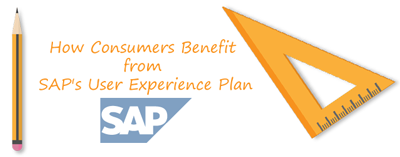
With the rapid evolution of technology today, individuals demand simple to use solutions at work in the similar way as they benefit from them in their personal lives. In-order to assist companies to deal with their user experience (UX) challenges, SAP is driving a new, renew, and enable policy. While reviving existing screens through solutions like SAP Fiori and SAP Screen Personas, SAP is chasing a customer-grade experience for all new applications. Moreover, SAP’s user experience design services allow consumers own UX revivals.
Through this article you can learn about how companies from different industries benefitted from SAP’s UX solutions and design services suggested by Andreas Hauser.
1. How food brand Nestle got benefitted.
In an iterative, collaborative way SAP worked directly with leading food and beverage company Nestle, on the first set of apps that ultimately emerged into a collection of over 200 role-based apps representing the new SAP UX model named SAP Fiori. This set of apps supplies improved user productivity and personalization for consumers utilizing SAP Business Suite powered by SAP HANA. SAP Fiori renders an uncomplicated, simple to-use experience and offers instantaneous information that can be availed across any device like a tablet, desktop and Smartphone, anywhere at any time. Users wherever they may be, can obtain insight into their business and can perform based on that information. Nestle today has 18 SAP Fiori apps distributed to about 500 people and the company claims that users have been very positive regarding the use of SAP Fiori.
Besides, the leading food brand had good experiences with SAP Screen Personas. In some cases, the solution has facilitated the company to trim down 75% of the screens necessary to complete an assignment. Nestle had positive responses from users because their productivity has improved as a result of lesser keystrokes, simplified screens, and a decrease in the number of screens used.
2. How petrochemical giant Shell got benefitted.
As shell is quite renowned in the petrochemical sector, high performing software is quite necessary and important to help deliver continual and profitable growth for the company. Using SAP Screen Personas, SAP’s design and Co-Innovation Center team was assigned the task to redesign the user experience of the company’s key software transactions. The team learned through user researches that Shell’s existing transaction-based processes were intricate and lengthy. After analyzing that there was no evident path for the user to steer through the pages, the team followed a three phase approach.
1. Discover: Execute user interviews
2. Design: based on user feedback, redesign screens
3. Develop: Build fresh new screens for Shell to use
In all the three stages, team members were involved to make sure that each person had a familiar understanding and could add to all features of the project. In-order to make sure that the team was meeting their needs, it was also quite important to involve the users in all the three stages.
The final result was great; in order to save the user time and clicks the team simplified navigation and mechanized processes. The number of screens and clicks was condensed from 7 to 3 and 45 to 26 respectively. Shell’s feedback was tremendously positive about the results accomplished with the different proofs of concept.

